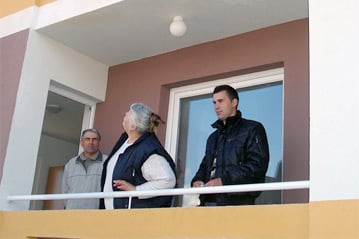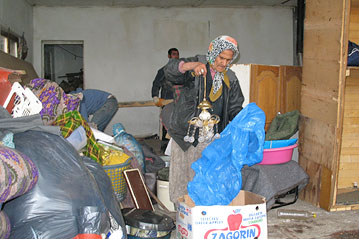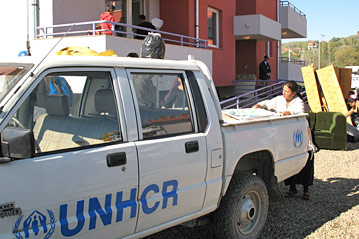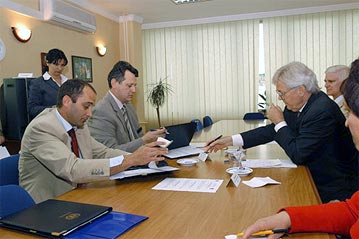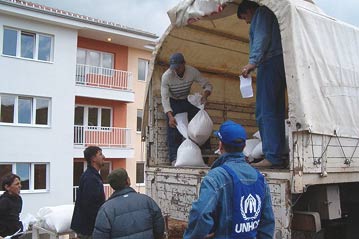FYR of Macedonia: continuing uncertainty over peace prospects
FYR of Macedonia: continuing uncertainty over peace prospects
A total of 309 people returned to the former Yugoslav Republic of Macedonia (FYROM) from Kosovo on Monday, while more than 180 left FYROM for Kosovo. The fluctuating numbers of new arrivals and returnees over the past few days reflects continuing uncertainty over peace prospects in the troubled region. From Friday through Sunday, UNHCR Kosovo reported nearly 1,000 new arrivals from FYROM. Most were from the Skopje area and said they left as a precautionary measure while awaiting the outcome of ongoing negotiations. About 62,000 refugees from FYROM remain in Kosovo, while some 12,000 have returned.
UNHCR Special Envoy Eric Morris is currently in FYROM, where he is urging the sides to ensure humanitarian access to affected towns and villages as a first step toward aiding civilian victims and ensuring the return of refugees and displaced people as soon as possible. Morris has called on political and military leaders to come to an agreement that will ensure peace and justice for all communities, and thus allow the return of those who fled their homes as quickly as possible. Progress on return is a critical measure for building confidence. The longer the displacement, the greater the fear, mistrust and polarization among the ethnic communities.
Morris has been visiting several villages over the past week, in part to help gauge the level of destruction and needs of eventual returnees and remaining populations. He has met with both ethnic Albanian and Macedonian Slavs. He visited the town of Aracinovo yesterday for the second time and was scheduled to travel to Lipkovo today. On a previous visit to Aracinovo a week ago, Morris found the village nearly deserted, with a high level of destruction. Some of the few remaining villagers - both Albanian and Macedonian - told him that only some 60 elderly people were left in the town, out of an original population estimated at between 7,000 and 10,000 (80 percent Albanian, 20 percent Macedonian Slav.)

